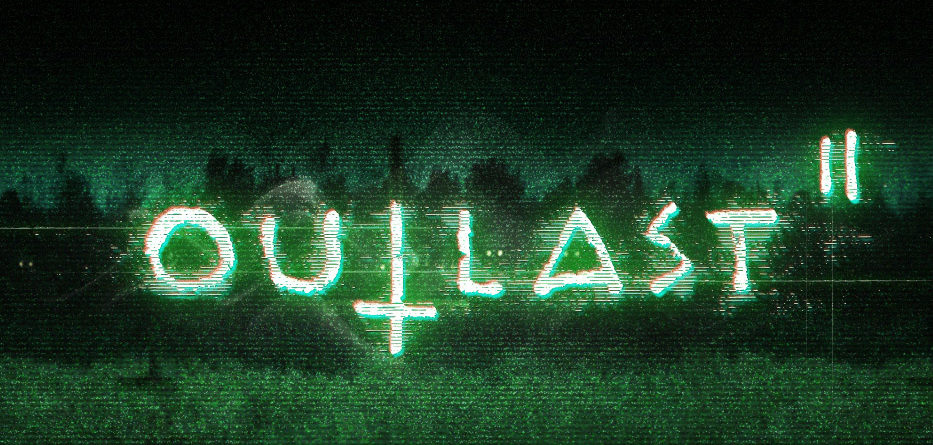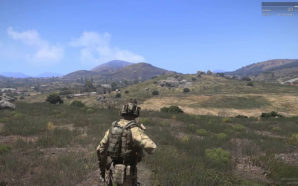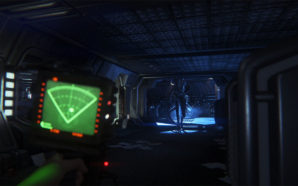Outlast II, a horror game developed by Red Barrels Studios, hit the scene a few weeks ago. Much like its’ predecessor, it came out both to raving reviews and scathing criticism. I am afraid this piece is one of the latter.
I’m here today to take a critical look at the way this game paces out it’s horror, and how it fails to keep the player in a state of fear.
The Resurgence of Horror Games
The gaming industry has seen a rather large resurgence of horror games in recent years, following the release and subsequent popularity of 2010’s Amnesia: The Dark Descent. This popularity directly coincides with the rise of Youtube’s popularity at the time, as everyone and their mothers picked up the game and made some hefty ad revenue by screaming into a facecam. The viewers ate it up, of course, so more and more videos were put up depicting terrified men, women, and children. Youtubers screamed, people laughed, and everyone went home happy. Ah, it was a simpler time… But I digress.
This unbridled popularity inevitably led to a wave of imitators, with most indie devs churning out quick jumpscare fests left and right. Shovelware flooded the Steam marketplace, selling copies mostly to people looking to spook their friends with that one game they saw Pewdiepie play last week. There were a few games, however, that showed real potential as horror games, which would never have seen the light of day without this shift in the state of the industry, such as Lone Survivor, The Last Door, and The Cat Lady.
The industry was left open, ready to receive any games with the ability to scare the pants off of a youtuber. Then, 2013 rolled around.
Enter Outlast
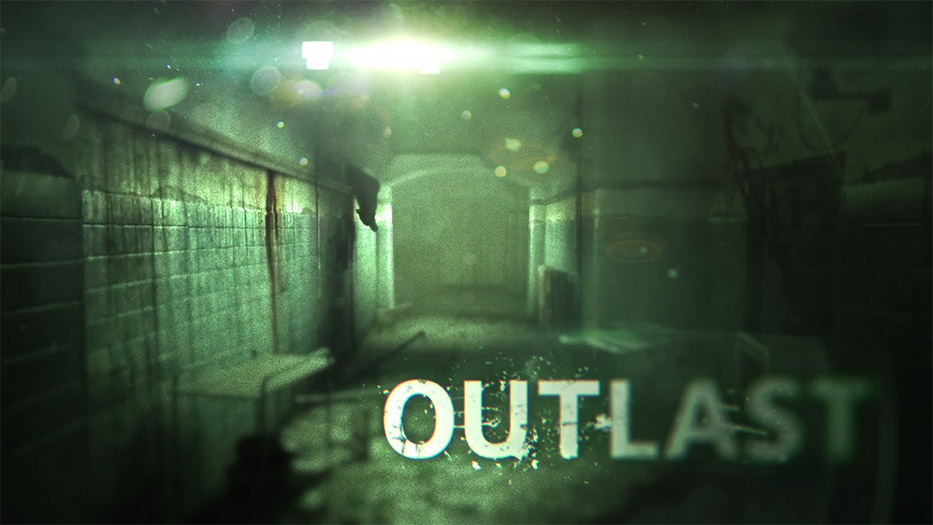
Photo Credit: https://i.ytimg.com/vi/fI95Edp7a-A/maxresdefault.jpg
Outlast was released by the newly-formed Red Barrels Studio. It was the story of a journalist who set out to Mount Massive Asylum in Colorado to investigate reports of inhumane experiments, only to become trapped with said experiments, mental patients gone berserk due to some mysterious form of experimentation.
The popularity of this game overtook even that of Amnesia. This time, the industry was shaped to receive Outlast, and it elbowed its’ way into many horror compilations and game of the year lists. The horrific gorefest pushed the boundaries of what kinds of horror we could have in games, emulating the unabashed gore of movies like Hellraiser and House of Wax, while also presenting a story filled with intrigue, mystery, and, well, plotholes. I personally saw it as a game with alot of potential, but with a flawed execution and lackluster second half. But hey, that’s just me.
Though if there is one thing we can say for certain, it’s that it was popular, and it garnered a hell of a cult following. A sequel was inevitable, was announced in 2016, and released 2017.
I didn’t think it was very good.
The Sins of Outlast II
The plot of Outlast II sounds alot like a rewrite of the Mad Libs that gave birth to Outlast. A journalist goes to (Western U.S State) to investigate a mysterious (crime). He is then trapped in (environment) with a group of murderous (type of crazy people). This time, it’s Arizona, Suicide, a desert, and cultists.
So, immediately the game drops Outlast’s interesting, enclosed environment which few people have ever visited. Instead, it replaces it with a tiny village filled with nutty cultists. Settings like this one are a dime a dozen; just look at any other horror movie. The setting is, at the very least, darker than most of it’s counterparts. Finding mutilated, flayed, and raped corpses very quickly becomes the norm. And yet, while that fact would be horrifying in most settings, it somehow only serves to detract from the horror of this one.
Upfront Horror
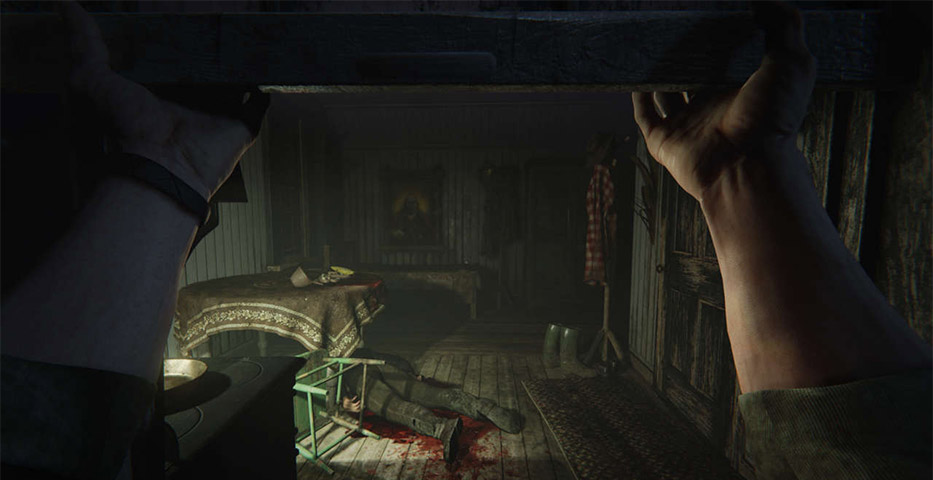
Photo Credit: https://static.gamespot.com/uploads/screen_kubrick/1365/13658182/3052348-outlast2-window.jpg
Outlast II blows it’s load too quickly, so to speak. The player is assaulted with graphic imagery right off the bat. The first thing you see upon crash-landing in Hicksville USA is the flayed corpse of your pilot nailed to a tree. Then, after a bit of wandering, you find a nearby village. The player’s senses are immediately assaulted by gutted cows and random puddles of blood. You also find a few notes detailing the horrid actions of the cult, including, but not limited to, rape, molestation, and child murder. All of this before you chance upon the room where the cult keeps their discarded child corpses.
It seems almost as if the game is attempting to offend and disgust the player in any way it can. Most of the time, it succeeds too. However, this is perhaps one of it’s greatest mistakes, as it immediately desensitizes the player. One can only see so many flayed corpses before the shock of seeing them becomes nonexistent. Outlast II front loads its’ horror in a way that kneecaps the rest of the shocks it has in store. This is one aspect of my main problem with the game – it’s pacing.
The Action Roller Coaster
There’s a concept of game design that is omnipresent in all games, but is especially important to horror games – ‘The Action Roller Coaster’. This idea essentially states that you have to have ups and downs in your game’s pacing. There have to be moments of intense action alongside quiet, reflective moments. In horror games, this is exemplified by chase sequences or combat, followed by cutscenes, exploration, or puzzles.
This careful balance of stillness and action serves to make players reflective and uncomfortable. In a game like Silent Hill 2, the quiet and mysterious emptiness of the wide city streets contrasts the claustrophobic nature of the monster-packed dungeons. The game also has puzzles and cutscenes to break up the tension. However, it never becomes predictable. The game will sometimes throw something at you to make you uncomfortable. Be it the macabre nature of the puzzles, the off-kilter nature of the cutscenes, or the abnormal warping of the city streets, theres always something to keep the player invested and unsettled.
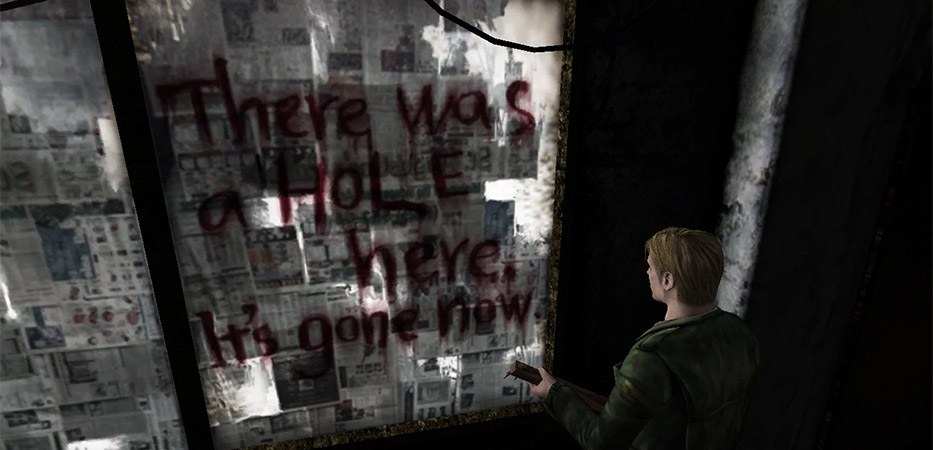
A strange message in Silent Hill 2 that unsettles you during exploration
Photo Credit: http://vignette2.wikia.nocookie.net/silent/images/b/b6/JamesHoleIsGone.jpg/revision/latest?cb=20121028105934
The Persistent Pacing Problem
Outlast II outright fails to even consider this method of pacing. Instead, the game railroads you from chase sequence to chase sequence, never allowing the player much time to rest. In the early game, you do have ‘flashback’ segments that take place in an old school. These start off as safe, but after a while chase sequences even begin to happen in your dreams.
This format very quickly becomes predictable while playing. You begin to see that when you enter a zone, you will need to unlock a door or get some kind of item to progress. You then have to do a stealth section to get the item which is guarded by enemies. Then, you insert the item, and a chase sequence usually ensues. This usually leads to a fall or trip that throws you into another flashback. Finally, you wake up at the entrance to another area, Rinse and repeat. And the game just goes on and on.
Stretching Out Your Time
The length of the game doesn’t help its’ case. This predictable formula is recycled over and over for about 8 hours. For me, it began to be egregious around the 4 hour mark. But the game just keeps going. The occasional shift in environment and enemy type sometimes helps this, but that damn formula just keeps occurring time and time again.
I can’t imagine why the developers would want to extend their game like this. Is the extra time tacked on to build more tension in the story? Or is it just there to make people feel like they’re getting more bang for their buck? For a game that clearly wants to emulate slasher flicks, it really drops the ball on building and maintaining tension.
I think the problem here may be one of poor decision making. It feels as if the team was very passionate about the horror they were trying to create, and this passion led them to put in every concept they came up with. One guy really wanted to have a level in the mines, and this other guy came up with a really neat crucifixion scene, and another had this great monster design, etc. etc. It makes me wonder if they decided to let everyone throw in an idea, and then included every single one of them in the game.
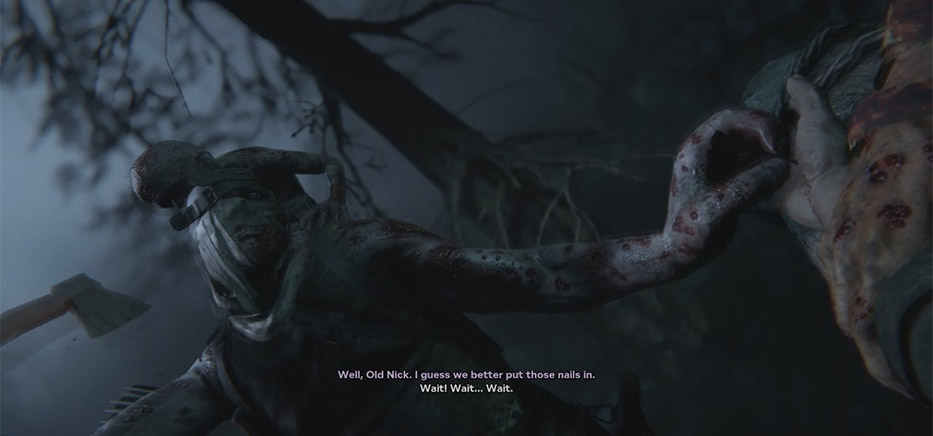
Crucifixion by discount Master Blaster – the worst way to go.
Photo Credit: https://i.ytimg.com/vi/XfhVEXygP-U/maxresdefault.jpg
Conclusion
I feel like Outlast II really had some potential to it. Despite being a bit of an overused setting, the world they created is at least interesting. However, the world is brought down by its’ disjointed hodgepodge of horror, as well as it’s overzealous use of shocking imagery. And the story of this world is just dragged on and on, without any downtime between scares.
Overall, Outlast II just proves to be a very tiring game. Sitting through the whole thing while linking together its’ disjointed plot is a chore. While the original Outlast had many of these same problems, at the very least it had a unique environment and didn’t drag on too long.
Hopefully, Red Barrels can turn it around for their next game, whatever that may be.




